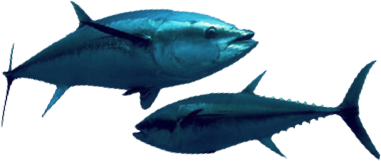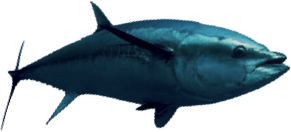The Commission for the Conservation of Southern Bluefin Tuna (CCSBT) is an intergovernmental organisation responsible for the management of southern bluefin tuna throughout its distribution. The CCSBT's objective is to ensure, through appropriate management, the conservation and optimum utilisation of southern bluefin tuna. (find out more about the role of CCSBT).
Members of the Extended Commission comprise: Australia, the European Union, the Fishing Entity of Taiwan, Indonesia, Japan, Republic of Korea, New Zealand and South Africa (find out more about becoming a member or cooperating non-member).
Southern Bluefin Tuna (Thunnus maccoyii) are large, fast swimming, pelagic fish (ie. living in the open seas). SBT are found throughout the southern hemisphere mainly in waters between 30 and 50 degrees south but only rarely in the eastern Pacific. The only known breeding area is in the Indian Ocean, south-east of Java, Indonesia. Southern bluefin tuna can live for up to forty years, reach a weight of over 200 kilograms, and measure more than 2 metres in length. (find out more about southern bluefin tuna).
The management of southern bluefin tuna is guided by an agreed Management Procedure (MP), which has been tuned to a 50% probability of achieving a biomass level of 30% of the original spawning stock biomass by 2035 (find out more about our management procedure).
The most recent full stock assessment for southern bluefin tuna concluded that the stock, as indicated by relative Total Reproductive Output (TRO), is estimated to be 23% (21-29%) of TRO0. It also found that the stock remained below the level estimated to produce maximum sustainable yield (MSY) and noted that the stock status has improved since the previous stock assessments conducted in 2020, which indicated that relative TRO was at 20% (16-24%) of TRO0 (find out more about the status of the stock).
The history of past decisions and currently effective measures adopted by the CCSBT can be found in the Compendium of CCSBT Measures.
- Compendium of CCSBT Measures (zip file (293KB), updated October 2025)

